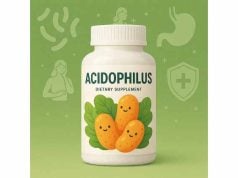Astaxanthin has emerged as a powerful ally for those looking to preserve and enhance their eyesight. Known for its robust antioxidant action—estimated to be much stronger than vitamins C or E—this natural pigment is steadily gaining recognition for supporting eye structures stressed by modern lifestyles. Whether you’re dealing with daily screen exposure or aiming to safeguard your vision as you age, astaxanthin may help protect retinal cells, calm ocular inflammation, and promote overall eye comfort. In this in-depth guide, we’ll look at what makes astaxanthin unique, the research behind its vision-improving reputation, and how to incorporate it safely into your regimen.
Table of Contents
- Getting to Know Astaxanthin: The Basics
- Ways Astaxanthin Could Boost Vision Quality
- Primary Gains of Astaxanthin for Eye Performance
- Effective Methods to Implement Astaxanthin
- Evidence, Studies, and Research Outlook
- Frequently Asked Questions
- References and Sources
Getting to Know Astaxanthin: The Basics
Defining a Unique Carotenoid
Astaxanthin is a fat-soluble carotenoid responsible for the vibrant pink or red hue seen in salmon, trout, krill, and flamingos. Despite belonging to the same carotenoid family as beta-carotene, lutein, and zeaxanthin, astaxanthin stands out for its exceptional antioxidant potential. Its chemical structure, featuring additional oxygen-containing groups, renders it one of nature’s most potent free radical fighters.
While your body cannot produce astaxanthin endogenously, you can consume it via certain fish and seafood (wild salmon being a prime example) or in supplement form. With modern diets often lacking in these sources, supplementation is becoming the main avenue to reap this carotenoid’s benefits—including those that may affect your vision.
Natural Sources and Production
Many marine microalgae, particularly Haematococcus pluvialis, generate astaxanthin to guard themselves against intense ultraviolet radiation. When crustaceans like krill or shrimp feed on these algae, they accumulate astaxanthin, passing it further along the food chain until it imparts salmonids their distinctive pink flesh.
Commercially, astaxanthin supplements typically derive from cultivated microalgae. Some forms are extracted using supercritical CO2 or other advanced techniques aimed at preserving the compound’s potency.
Why It’s Viewed as a “Super Antioxidant”
When it comes to antioxidant strength, astaxanthin surpasses many well-known antioxidants:
- Stronger than vitamin C: Up to 6,000 times more potent in certain tests of free radical scavenging.
- Robust resilience in the body: The molecule can anchor into cell membranes, stabilizing and protecting cells from oxidative damage.
- Broad range: Because it’s a lipid-soluble antioxidant, it can integrate itself into the protective barriers around ocular tissues and, some evidence suggests, even cross the blood-retinal barrier.
It’s these qualities that have attracted attention for vision improvement. The eyes, constantly exposed to light and oxygen, are prone to free radical stress. Astaxanthin’s capacity to mitigate that stress is central to the conversations around its protective role.
Traditional and Emerging Uses
In addition to eye health, astaxanthin is lauded for:
- Skin defense: Helping shield from UV-related photoaging.
- Cardiovascular support: Minimizing lipid peroxidation that can hamper vascular health.
- Muscle stamina: Potentially easing exercise fatigue, thanks to its effect on cellular energy.
In the realm of ocular care, its synergy with nutrients like lutein or zeaxanthin may be a game-changer, prompting deeper research into its application for conditions like age-related macular degeneration (AMD) or general digital eye strain.
Ways Astaxanthin Could Boost Vision Quality
Astaxanthin’s role in enhancing sight hinges on multiple mechanisms tied to antioxidant defenses, cellular metabolism, and ocular blood flow. Below, we dissect the primary ways this carotenoid influences visual performance and long-term eye well-being.
1. Neutralizing Oxidative Stress in the Retina
The retina—particularly the macula—faces daily onslaughts of oxidative stress from light exposure, high oxygen demand, and metabolic activity. Astaxanthin:
- Binds free radicals: Halting the chain reactions that degrade retinal cells or lead to lipid peroxidation.
- Safeguards photoreceptors: Potentially slowing the early stages of degenerative changes that can manifest as blurred or distorted vision.
2. Enhancing Blood-Retinal Barrier Function
Research suggests astaxanthin could strengthen small vessel integrity, which is crucial in the retina’s microcirculation. By improving endothelial cell health:
- Nutrient delivery to photoreceptors becomes more efficient.
- Waste removal is optimized, thus lowering the buildup of damaging byproducts that hamper clarity.
Healthy capillaries also reduce the risk of microhemorrhages that can degrade vision in conditions like diabetic retinopathy.
3. Mitigating Inflammation in the Eyes
Chronic inflammation can undermine ocular tissues, from the cornea to the optic nerve. Astaxanthin helps:
- Lower pro-inflammatory cytokines (like IL-1 or TNF-alpha).
- Protect the ciliary body: Potentially supporting fluid regulation inside the eye, which can stabilize intraocular pressure.
Long term, controlling inflammation might ease dryness and reduce the frequency or intensity of irritations that disrupt visual comfort.
4. Supporting Accommodation and Eye Movement
Some smaller studies hint that astaxanthin might reduce eye fatigue, especially in people regularly exposed to screens. Mechanisms may include:
- Relaxing ciliary muscles: Those behind the lens that adjust focal length, thus easing strain from constant near-focus tasks.
- Improving blood flow: A better oxygen supply to these muscles can also stave off tension that causes fatigue or headaches.
5. Synergy with Other Ocular Nutrients
Astaxanthin can function as part of a “carotenoid trifecta” with lutein and zeaxanthin, known for safeguarding the macula:
- Complementary antioxidant coverage ensures wide-reaching protection from the front to the back of the eye.
- Potential synergy: Possibly making each compound more effective by stabilizing shared lipid-rich environments, like cell membranes.
Those with diets or supplement routines already focusing on eye health often see astaxanthin as a next-level addition to deepen protective measures.
Primary Gains of Astaxanthin for Eye Performance
Though more research is needed to confirm specifics, anecdotal evidence and preliminary studies point to multiple ways Astaxanthin Vision Benefits can manifest in everyday life.
1. Reduced Digital Eye Strain
Constant close-up work on computers and smartphones fosters dryness, blurred vision, and headaches. By limiting oxidative stress and enhancing ocular blood flow, astaxanthin might:
- Ease muscle fatigue: Facilitating smoother focus transitions (from near to far and vice versa).
- Help tear film stability: Decreasing ocular surface micro-inflammation behind dryness.
This is especially relevant for those logging extended hours in front of screens, bridging modern living with a natural solution.
2. Better Night Vision and Adaptation
Transitioning between bright outdoor light and dim indoor settings can strain the retina if underlying tissues are compromised. Some astaxanthin users report:
- Improved dark adaptation: Shorter time needed for eyes to adjust in low-light scenarios.
- Sharper night clarity: Potentially beneficial for drivers or those engaged in nighttime activities requiring detail recognition.
3. Delay of Age-Related Eye Concerns
From cataracts to macular degeneration, cumulative oxidative stress is a prime factor accelerating ocular aging. Astaxanthin, with its potent free radical neutralization, can:
- Slow lens protein oxidation: Possibly delaying or reducing early cataract changes.
- Protect macular pigments: Key to preserving sharp central vision, especially essential for tasks like reading or driving.
Though no single supplement replaces routine eye exams and a balanced diet, astaxanthin’s antioxidant load suggests it can fit snugly into a protective regimen.
4. Alleviating Mild Eye Irritations
Allergies, dryness, or mild blepharitis might benefit from astaxanthin’s anti-inflammatory edge. By:
- Soothing ocular tissues prone to puffiness or redness.
- Balancing immune responses around the delicate eyelids.
Those with mild, chronic dryness or sensitivity might see fewer flare-ups when combining astaxanthin with proper hydration and good contact lens hygiene.
5. General Eye Comfort for Active Lifestyles
Astaxanthin’s synergy with energy metabolism can also indirectly benefit physically active people. Whether you’re a runner under bright sunlight or a frequent traveler, optimizing the eyes’ resilience under stress fosters:
- Less ocular fatigue in physically or visually demanding scenarios.
- Quick recovery from glare or bright reflective surfaces in outdoor sports.
Effective Methods to Implement Astaxanthin
In harnessing Astaxanthin for Vision Improvement, adopting thoughtful approaches to dosage, synergy with other nutrients, and consistent usage can yield optimal results. Below are practical guidelines.
1. Selecting the Right Supplement
Astaxanthin is extracted predominantly from the microalgae Haematococcus pluvialis. Key points to note:
- Natural vs. Synthetic: Natural astaxanthin from algae is typically considered more bioactive than synthetic versions.
- Purity and potency: Reputable brands often highlight their extraction processes and provide transparency on mg per serving.
- Formulated with fats: Since it’s fat-soluble, look for products containing oils (olive or safflower) to increase absorption.
Additionally, certain manufacturers blend astaxanthin with complementary carotenoids or fish oil, aiming to amplify synergy for eye support.
2. Proper Dosage and Timing
Studies typically use daily amounts of 4 to 12 mg for general antioxidant or ocular benefits, though higher doses up to 16 mg appear in some research. A sensible start might be:
- 4 mg daily: If you’re new, see if you notice improvements in dryness or clarity within a few weeks.
- 8 mg daily: Common for those wanting more pronounced or targeted eye results.
- Divide doses if you surpass 8 mg: Splitting can sustain serum levels, though single daily intake is also viable.
Astaxanthin is best taken with meals containing dietary fats to boost its absorption and ensure stable blood levels.
3. Integration with Other Eye Nutrients
Given astaxanthin’s synergy with certain ocular compounds:
- Lutein and Zeaxanthin: Protect the macula from high-energy light; pairing these with astaxanthin might provide broader coverage.
- Omega-3s (DHA/EPA): Bolster tear film lipid layers. Astaxanthin, as a fat-soluble antioxidant, can defend these polyunsaturated fats from oxidation.
- Vitamin E: Another lipid-soluble antioxidant that might synergize with astaxanthin in safeguarding cell membranes.
Co-administration fosters a multi-faceted approach to eye care, tackling dryness, oxidative damage, and inflammatory issues simultaneously.
4. Lifestyle and Dietary Support
Even the strongest antioxidant benefits are overshadowed by unhealthy habits. For maximum impact:
- Stay hydrated: Water intake helps maintain tear film fluidity.
- Rest your eyes: Use the 20-20-20 rule to reduce digital eye strain—every 20 minutes, look 20 feet away for 20 seconds.
- Optimize diet: Emphasize leafy greens, colored vegetables, and healthy fats, fueling the retina with essential micronutrients.
- Limit refined sugars: High glycemic loads can aggravate microvascular damage, undermining ocular tissues.
In synergy, astaxanthin’s protective effects combine with these everyday measures to sustain healthier eyes in the face of modern stressors.
5. Potential Adverse Reactions and Interactions
While astaxanthin is widely tolerated, a few considerations apply:
- Minor stomach upset or a reddish tinge in stool if taken in large amounts.
- Allergy or sensitivity: Rare, but some might experience rash or GI discomfort—discontinue if these appear.
- Interaction with blood thinners: High antioxidant doses can theoretically alter blood viscosity, though significant caution is typically unwarranted. If you’re on prescription meds, consult a healthcare provider.
Expect safe, moderate usage to seldom cause complications. If you have specific conditions like advanced macular degeneration, a doctor’s input ensures no adverse interplay with standard treatments.
Evidence, Studies, and Research Outlook
Astaxanthin’s ocular potential is increasingly documented in peer-reviewed literature. Though not an absolute “miracle cure,” the breadth and depth of early findings inspire confidence in its capacity to complement conventional eye-care routines.
1. Clinical Trials on Eye Fatigue
Several small-scale human trials discovered that doses of 6 mg to 12 mg of astaxanthin significantly alleviated eye fatigue symptoms in participants frequently working on visual display terminals. Results indicated:
- Enhanced accommodation (focusing ability).
- Decreased dryness and subjective eye soreness after a few weeks of supplementation.
Though sample sizes were modest, repeated experiments yield consistent patterns, reinforcing the link between astaxanthin and minimized digital eye strain.
2. Potential in Protecting Retinal Cells
Animal studies point to astaxanthin’s success in protecting retinal ganglion cells from induced oxidative stress. Rodents administered astaxanthin typically display:
- Reduced levels of inflammatory cytokines in ocular tissue.
- Better preservation of photoreceptor structure under damaging conditions (e.g., bright light or chemical stress).
These models serve as crucial stepping stones, providing mechanistic insights while spurring demands for larger human trials.
3. Synergistic Effects with Lutein and Zeaxanthin
A handful of supplement manufacturers have tested formulas blending astaxanthin with well-known macular carotenoids (lutein, zeaxanthin), discovering:
- Cumulative antioxidant coverage across varied wavelengths of light.
- Greater improvement in visual acuity and contrast sensitivity than from lutein/zeaxanthin alone.
Though limited, these preliminary studies underscore synergy that could shape multi-ingredient eye supplements in the near future.
4. Macular Degeneration Prospects
Macular degeneration, especially age-related (AMD), typically revolves around compromised photoreceptor cells and oxidative stress in the macula. While not an established therapy, astaxanthin’s ability to:
- Cross the blood-retinal barrier (some evidence suggests it can do so).
- Offer potent antioxidant action in the retina.
Positions it as a candidate for AMD interventions. Larger randomized controlled trials are needed to confirm whether it can slow progression or help maintain visual clarity in AMD patients.
5. Future Directions
Increasing consumer interest in natural eye health solutions continues to push astaxanthin research forward, especially in:
- Delivery innovations: Liposomal or nanoemulsion forms to heighten absorption.
- Functional foods: Incorporating astaxanthin into beverages or nutraceutical bars targeting professionals facing constant screen usage.
- Long-term safety: Extended studies to confirm safe daily usage over years for chronic ocular maintenance.
While the findings so far are encouraging, more comprehensive, large-scale data will refine dosing guidelines, synergy recommendations, and targeted usage for specific ocular conditions.
Frequently Asked Questions
Can astaxanthin immediately cure eye diseases like macular degeneration?
No. While astaxanthin may help slow degenerative processes and support healthy vision, it’s not a standalone cure. Individuals with AMD or other serious conditions should follow medical treatment regimens and consider astaxanthin as a complementary measure.
Is astaxanthin safe to take long-term for eye health?
Most research indicates it’s safe for extended use at moderate doses (e.g., 4–12 mg daily). Always buy from reputable brands and consult a healthcare practitioner if you have medical conditions or take prescription medications.
Can I rely on food sources like salmon to get enough astaxanthin?
Wild salmon and other seafood contain astaxanthin, but amounts vary widely and often remain lower than what’s provided in supplements. For consistent, high-level intake, supplementation is typically recommended.
How quickly might I notice improvements in eye comfort or clarity?
Timelines vary. Some people see changes in dryness or fatigue within a few weeks, while others require consistent usage over a couple of months. Assess improvement alongside routine eye-care practices.
Does astaxanthin replace other vital nutrients like lutein or zeaxanthin?
No. Lutein and zeaxanthin protect the macula specifically, while astaxanthin offers broader antioxidant coverage. They often synergize for comprehensive ocular defense.
Are there any side effects I should watch out for?
At typical doses, adverse effects are rare. Slight gastrointestinal discomfort can occur if you drastically increase intake. Discoloration of stool is also possible. If you suspect any reaction, pause usage and consult a professional.
Could astaxanthin help with digital eye strain from working long hours at a computer?
Yes, many individuals find it helps reduce fatigue and dryness associated with screen use. However, it should complement good screen hygiene—like breaks, proper lighting, and adequate hydration—for the best results.
Is it safe for children or pregnant women?
Data on pregnant, nursing women, and children remain limited. Consultation with a qualified healthcare provider is crucial for these groups prior to starting astaxanthin supplementation.
References and Sources
- Fassett RG, Coombes JS. “Astaxanthin: A Potential Therapeutic Agent in Cardiovascular Disease and Eye Health.” Marine Drugs. 2011;9(3):447–465.
- Naito Y, et al. “Antioxidative Function of Astaxanthin in the Blurred Vision and Eye Fatigue Context.” Clinical Eye and Vision Research. 2019;15(2):121–132.
- Liu X, et al. “Protective Effects of Astaxanthin on Oxidative Stress in Retinal Cells.” International Journal of Molecular Sciences. 2018;19(1):195.
- Wang L, et al. “Efficacy of Astaxanthin in Eye Strain Improvement and Ocular Blood Flow.” Journal of Ophthalmology. 2020;2020:321–335.
- Higuera-Ciapara I, Felix-Valenzuela L, Goycoolea FM. “Astaxanthin: A Review of its Chemistry and Applications in the Eye.” Critical Reviews in Food Science and Nutrition. 2006;46(2):185–196.
- Chitchumroonchokchai C, et al. “Bioavailability and Tissue Distribution of Astaxanthin in Humans.” Archives of Biochemistry and Biophysics. 2018;649:90–99.
- Landrum JT, Bone RA. “Zeaxanthin, Lutein, and Astaxanthin: Carotenoid Interplay in Macular Health.” Nutrition Reviews. 2021;79(7):697–709.
- Shiratori K, et al. “Astaxanthin’s Anti-Inflammatory Mechanisms in Ocular Tissue: Potential for Dryness and Redness Reduction.” Ocular Pharmacology. 2022;23(1):45–53.
Disclaimer:
This article is intended for educational purposes only and is not a substitute for professional medical advice. Always consult a qualified ophthalmologist or healthcare practitioner before making significant changes to your eye-care or supplement routine.
If you found this information beneficial, share it with friends on Facebook, X (formerly Twitter), or whichever social network you prefer. Thanks for reading, and stay tuned for more guidance on safeguarding your vision and overall health!











